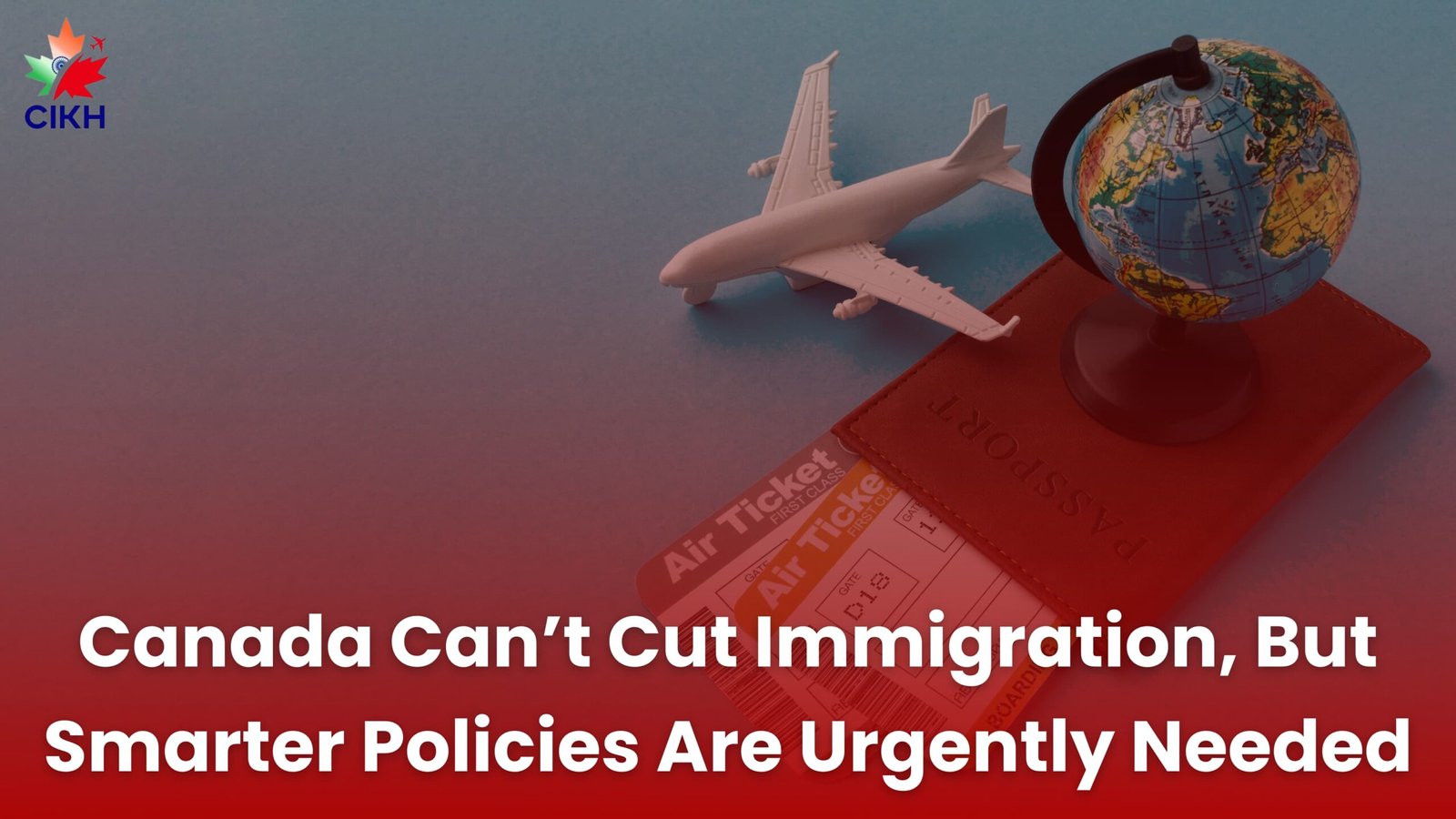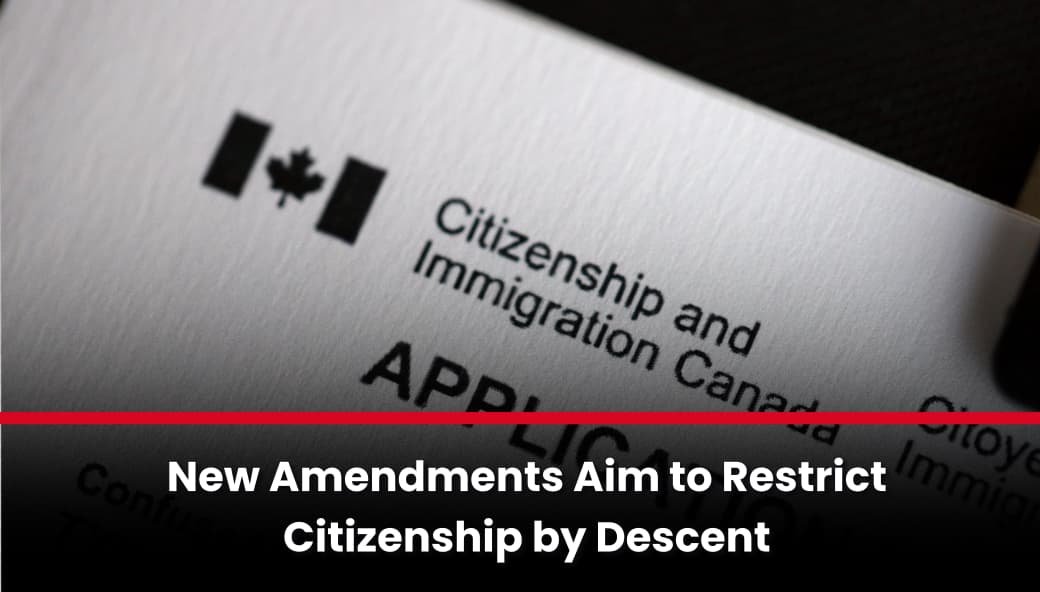Canada’s immigration debate reignited on July 14, 2025, when Conservative leader Pierre Poilievre once again called for “very hard caps on immigration levels.” His claim that Canada is “divided” and struggling to “integrate” newcomers, along with his suggestion that “more people should leave than come” for the next few years, has sparked renewed controversy.
Book Your Consultation for Canadian Immigration
This article doesn’t support any political party. Our focus is on facts, not rhetoric.
But Poilievre’s proposal overlooks a hard truth: slashing immigration could lead to economic disaster.
The Misunderstood Immigration Numbers
A lesser-known fact: many of Canada’s annual permanent residents aren’t newcomers from abroad. They’re already in Canada—students, workers, and temporary residents—who transition to permanent status. These transitions often go unnoticed but are crucial to workforce stability and economic growth.
With Canada’s population stalled at 41,548,787 in Q1 2025, and labour shortages worsening, cutting immigration now would only deepen the crisis. A smarter strategy—not a political soundbite—is what’s urgently needed.
Why Cutting Immigration Is Economically Dangerous
Business on the Brink
The population slowdown—down from a 2.5% annualized growth in 2023—is already hurting Canadian businesses. Labour shortages are mounting: 55% of small businesses reported hiring difficulties in 2025, with hospitality and retail vacancy rates reaching 22%.
Immigrants, who make up nearly 30% of these workforces, are essential. For example:
- A Toronto café closed a location in 2025 due to unfilled shifts.
- An Alberta construction firm delayed projects because of a 20% labour shortfall.
Consumer spending—driven by immigrants—fuels 60% of Canada’s GDP. A population slowdown has caused a 15% sales drop in Calgary, with similar declines elsewhere.
Poilievre’s call for negative net migration would intensify these pressures, hurting both employers and consumers.
The Education Sector’s Crisis
Canada’s colleges and universities rely heavily on international students, who contributed $37.3 billion to the economy and supported over 360,000 jobs in 2022. But with federal study permit caps, international student numbers are down 50% in 2025.
- Seneca College shut down a satellite campus.
- Mohawk College laid off 150 staff due to a $25 million funding gap.
International students also work part-time in critical sectors like retail and hospitality. Cutting immigration further threatens not only higher education but also the local economies tied to it.
A Broader Economic Threat
Canada’s 2025 growth forecast is just 1.5%, supported largely by immigration. Immigrants account for 36% of labour force growth, and with 20% of Canadian workers nearing retirement, that number must increase.
The Bank of Canada found in 2023 that immigration supports non-inflationary growth—boosting productivity without raising prices. With U.S. tariffs and a stagnating population, immigration is one of the few tools Canada has left to stay competitive.
Poilievre’s call for hard caps, absent any alternative plan, risks tipping the economy into recession.
Brain Drain: A Growing Risk
In 2024, over 106,000 Canadians left the country—the highest emigration in nearly 60 years. Skilled workers and young professionals are heading to the U.S. for better pay and lower taxes.
A 2025 survey of tech companies found 15% of top talent had relocated abroad. This talent loss is barely being offset by incoming professionals. Further immigration cuts would only widen the gap.
Poilievre’s plan ignores this crisis. Without a proactive immigration policy, Canada can’t replace its departing talent.
Smarter Immigration: What Canada Actually Needs
Precision Over Populism
Yes, housing and healthcare are strained. But slashing immigration doesn’t fix that—it just creates new problems. Canada needs precision immigration: target the right people, for the right jobs, in the right places.
For example:
- Toronto needs 305 doctors in 2025, but current immigration streams don’t guarantee placement.
- British Columbia’s pilot for foreign-trained doctors, which reduces credentialing time by 30%, could be scaled nationwide.
Reforming the French Category
While promoting French-speaking immigration is vital for bilingualism, it shouldn’t come at the expense of economic needs. Many French-speaking newcomers lack qualifications in high-demand fields.
Revising the category to prioritize in-demand jobs—like nursing or skilled trades—would align cultural and economic goals.
Transitioning Canada’s Existing Talent
Over 40% of 2025’s new permanent residents are temporary residents already living and working in Canada. These are pre-integrated individuals who should be fast-tracked.
Yet many face delays of 18 months or more. For example, a construction worker in Alberta may leave for another country due to long wait times—just when they’re most needed.
Streamlining transitions from temporary to permanent status is low-hanging fruit.
Fixing the Asylum System
Canada’s refugee system is overwhelmed, with protected person applications taking up to 41 months. This breeds frustration and allows fraud.
Poilievre criticizes the system but offers no real fix. The solution? Speed up processing:
- Approve or reject cases in 6 months.
- Increase adjudicator staffing and digitize the system.
- Build on existing efficiencies—such as work permits processed in 8 days post-eligibility.
A faster system restores trust, helps legitimate refugees contribute sooner, and deters abuse.
The Cost of Inaction: Recession Risk
Canada’s economic engine runs on population growth—80% of which comes from immigration. A 10% drop in immigration could reduce GDP growth by 0.5%.
Some sectors are already paying the price:
- Retailers in Vancouver saw a 15% sales drop in 2025.
- Labour force shortages could exceed 100,000 annually, according to 2024 projections.
Without a strategic plan, immigration caps could accelerate a recession.
A Path Forward: Smarter, Regionally Tailored Immigration
Targeted Immigration Programs
Programs like the Provincial Nominee Program (PNP) should be sharpened to require job offers in high-need areas and integrate credential recognition directly into the process.
This ensures immigrants are not just arriving—but contributing where they’re needed most.
Regional Distribution
Canada’s needs aren’t the same everywhere. Toronto faces housing pressure, while Atlantic Canada needs population growth. A one-size-fits-all policy ignores this reality.
Regional quotas, based on labour market data, can rebalance immigration without reducing overall numbers.
Public Engagement and Transparency
Poilievre’s message resonates because frustrations are real. But anger isn’t a strategy.
The government must rebuild public trust by showing how immigration supports jobs, healthcare, and education—and how it can be done better.
Community outreach, transparent data, and town halls can help citizens see immigration as a solution, not a scapegoat.
Conclusion: Facts Over Fear
Pierre Poilievre’s call for hard immigration caps and negative net migration is a politically driven gamble—untethered from economic reality and devoid of serious policy.
At the same time, the Liberal government must do better in aligning immigration with Canada’s real needs.
With the population stalled, labour markets strained, and public services under pressure, cutting immigration now would be economic suicide.
The path forward is clear: precision-based immigration that targets skills, addresses regional demands, and streamlines transitions. By rejecting fear-based populism and embracing evidence-based solutions, Canada can harness immigration as a powerful engine for future growth.





